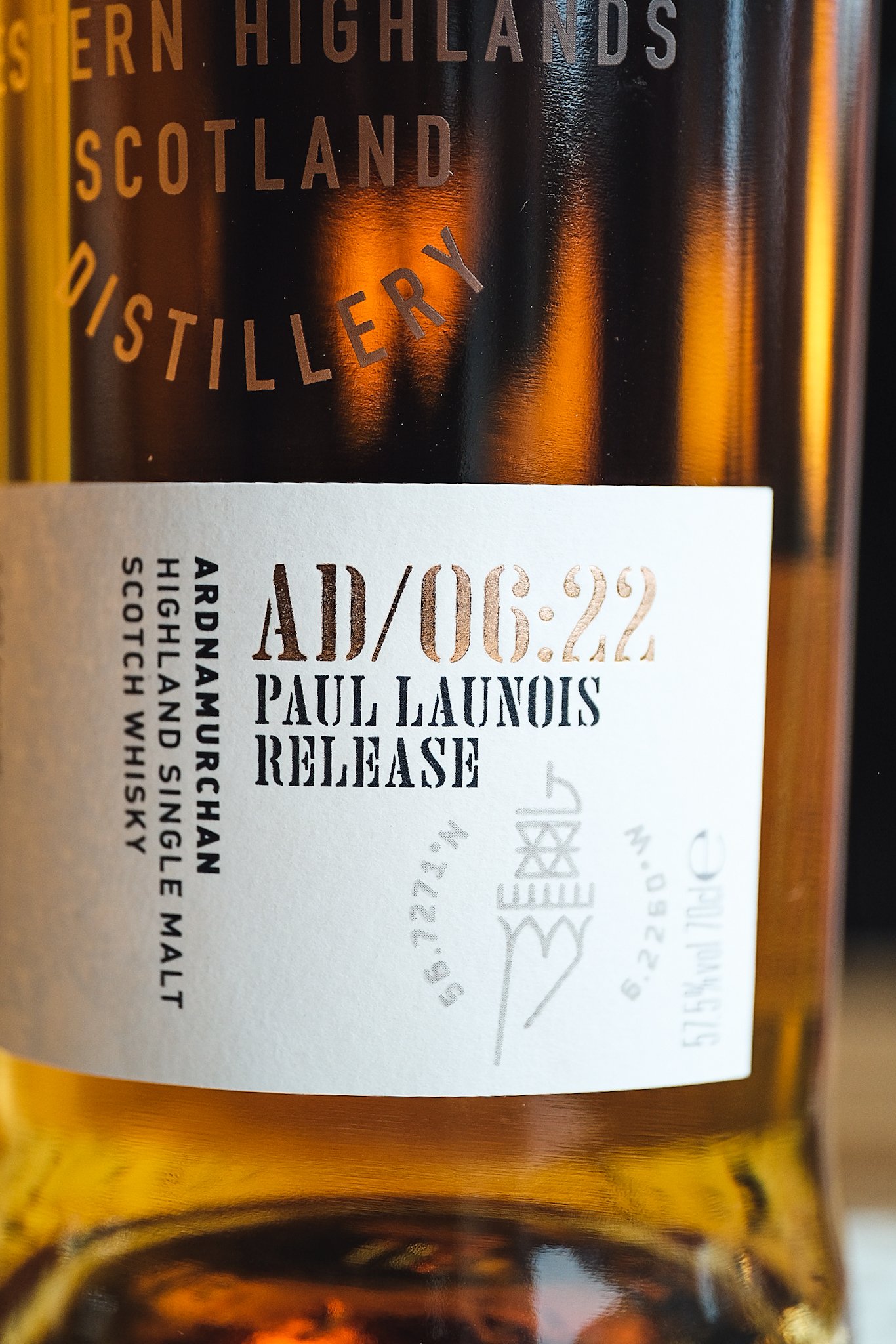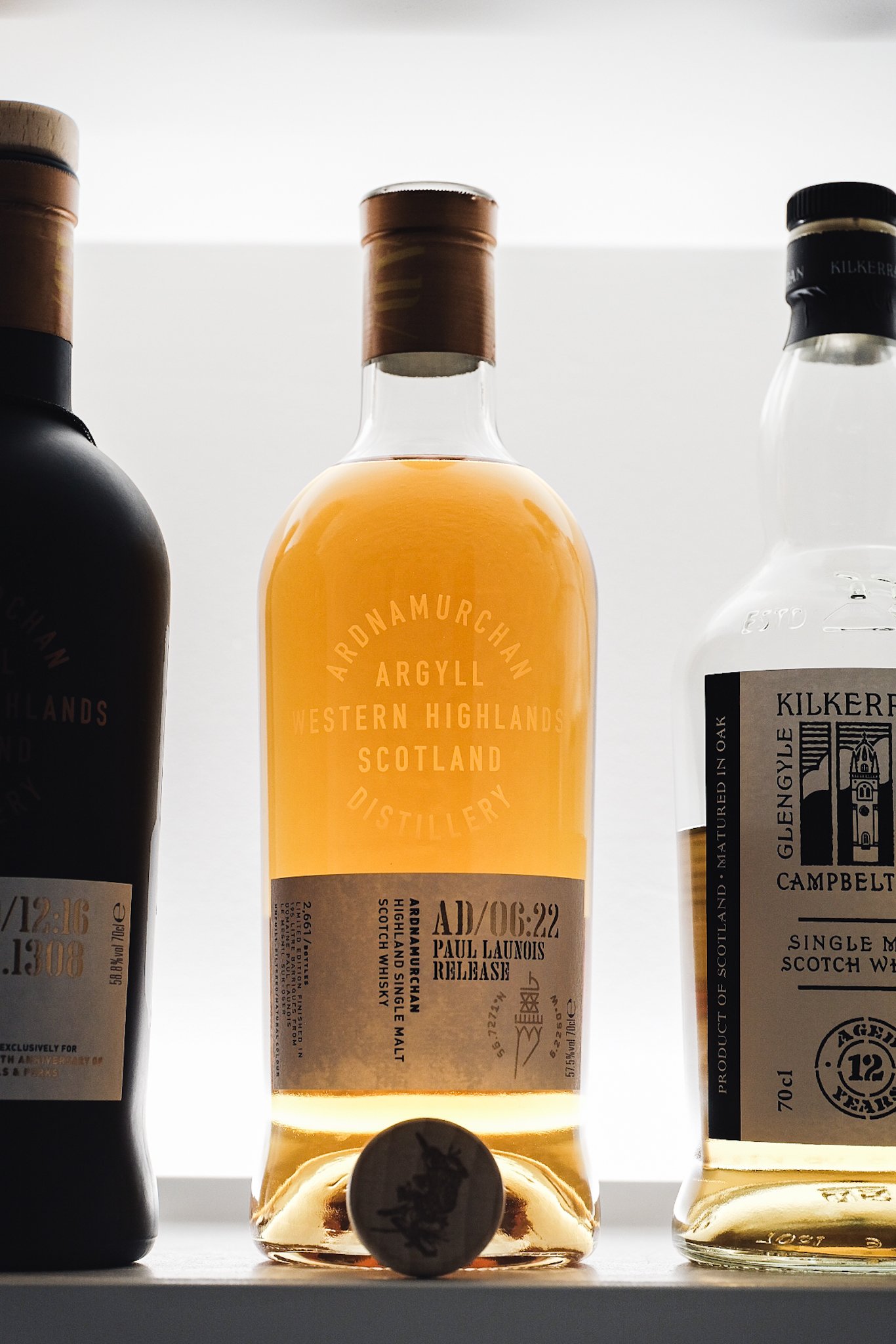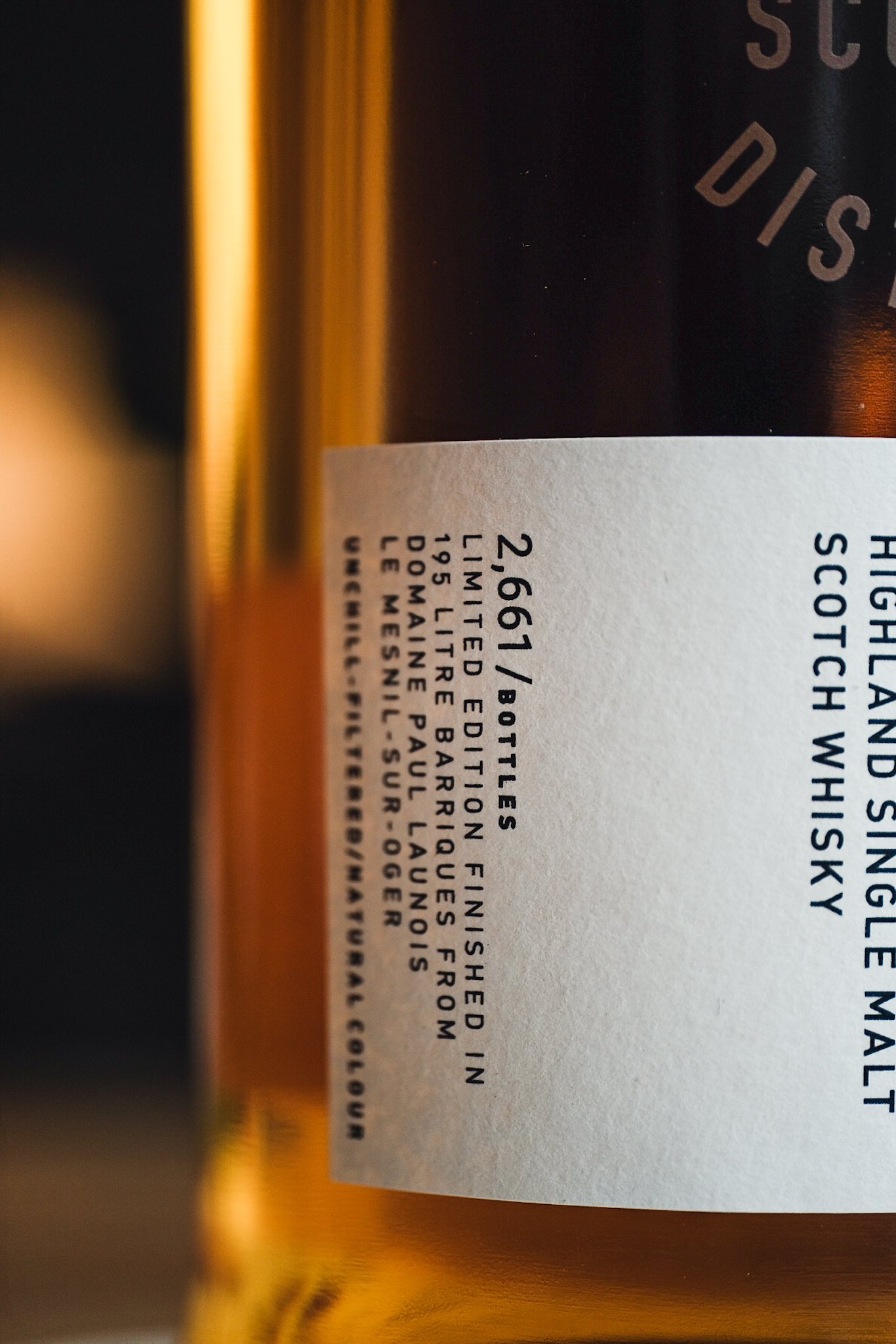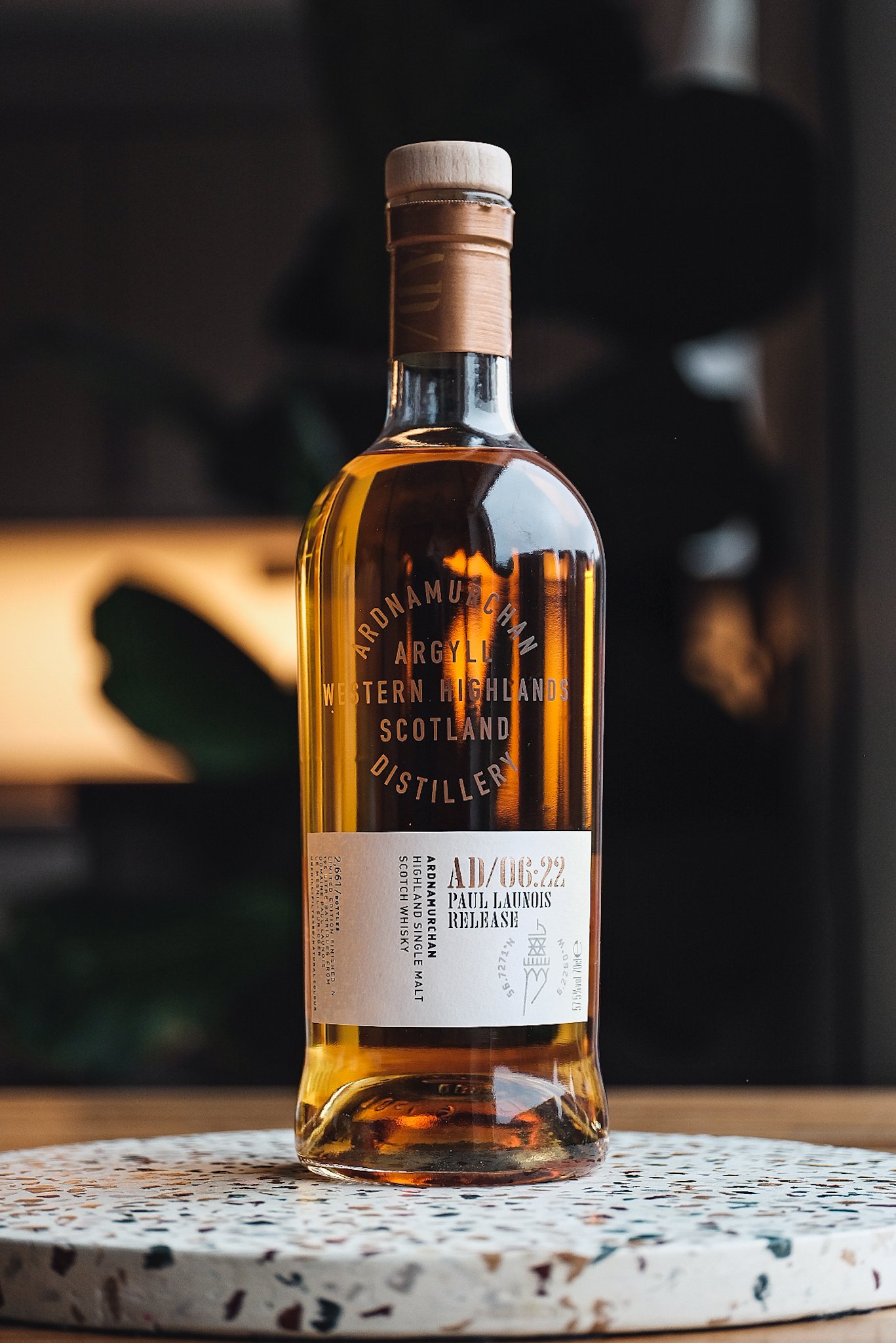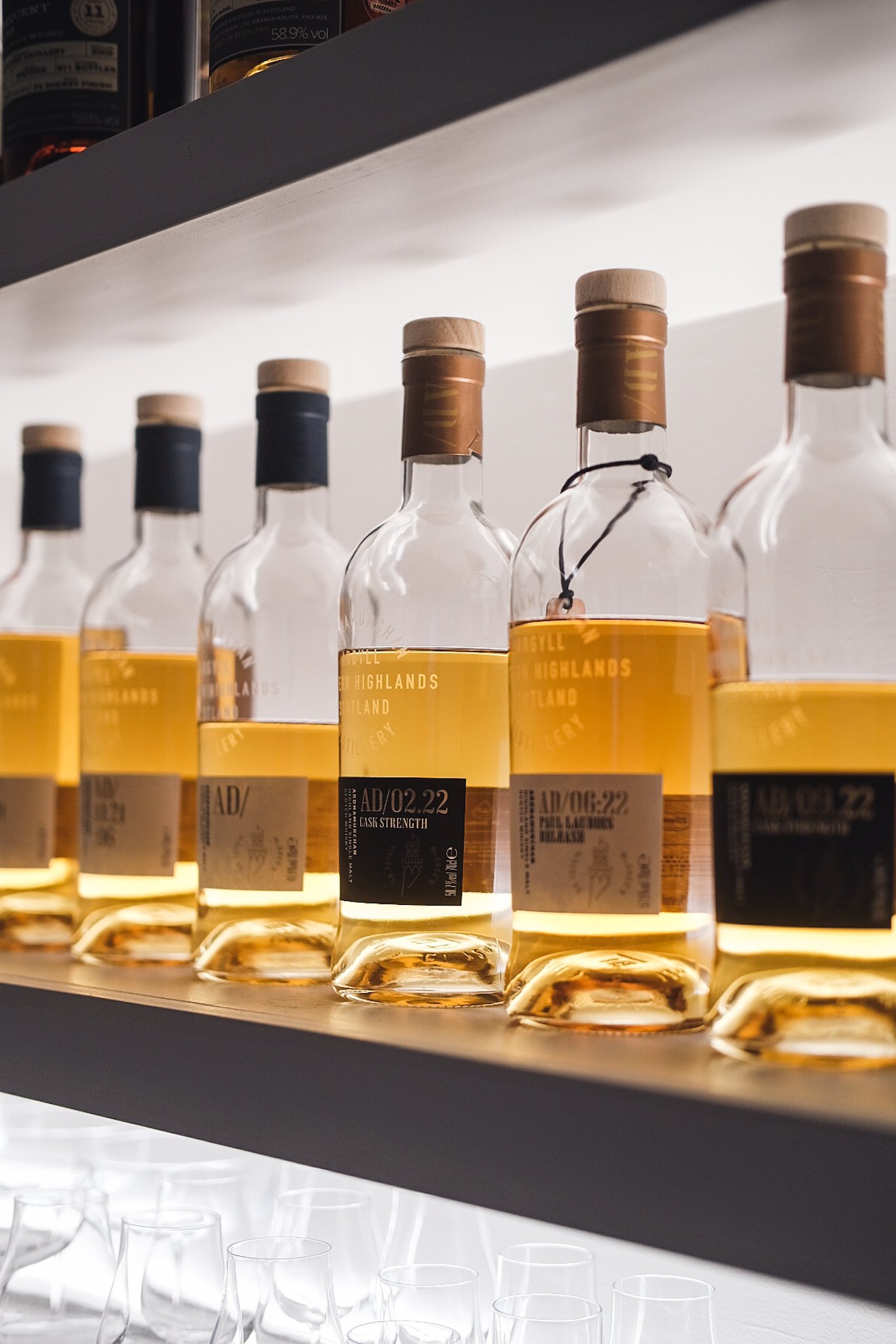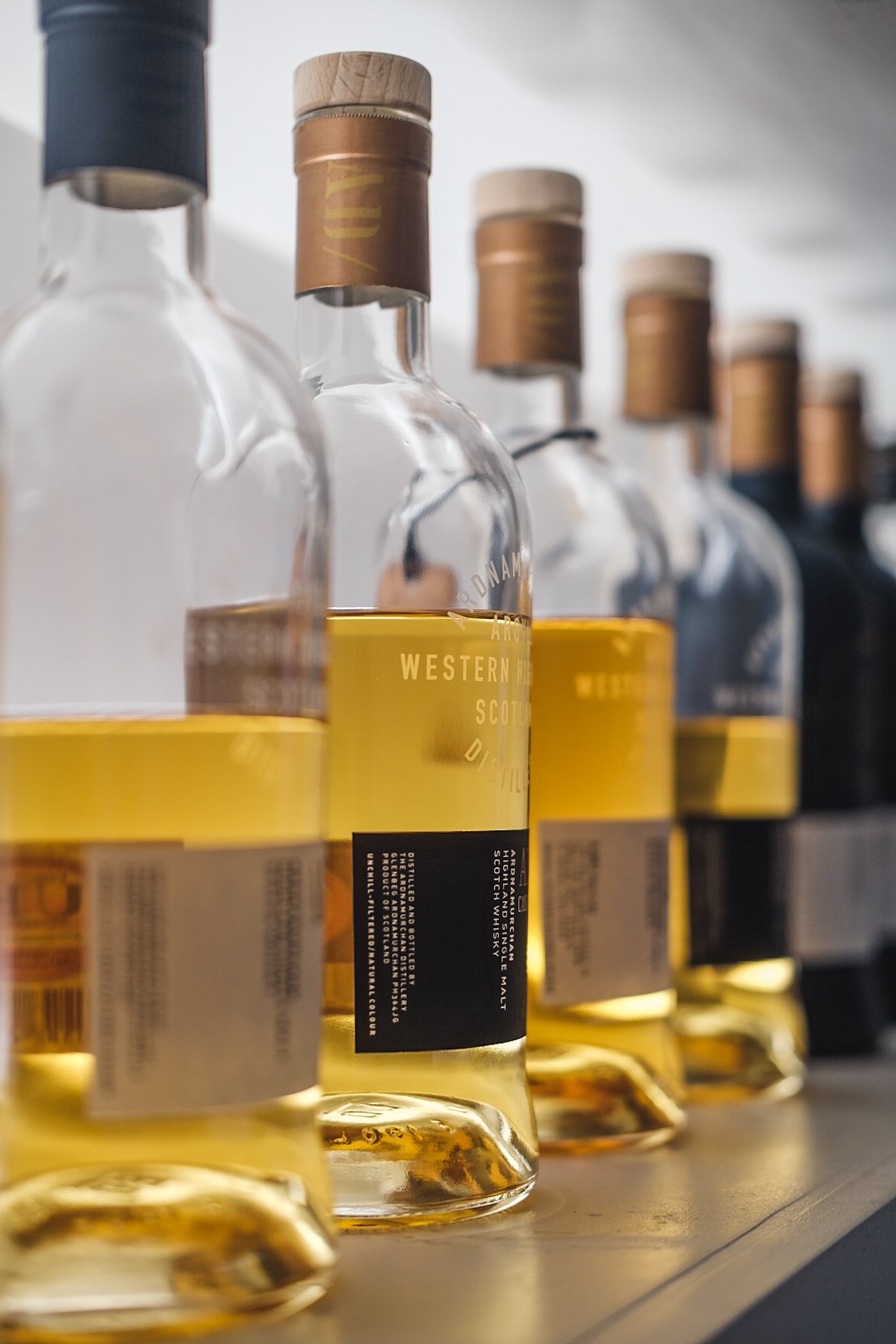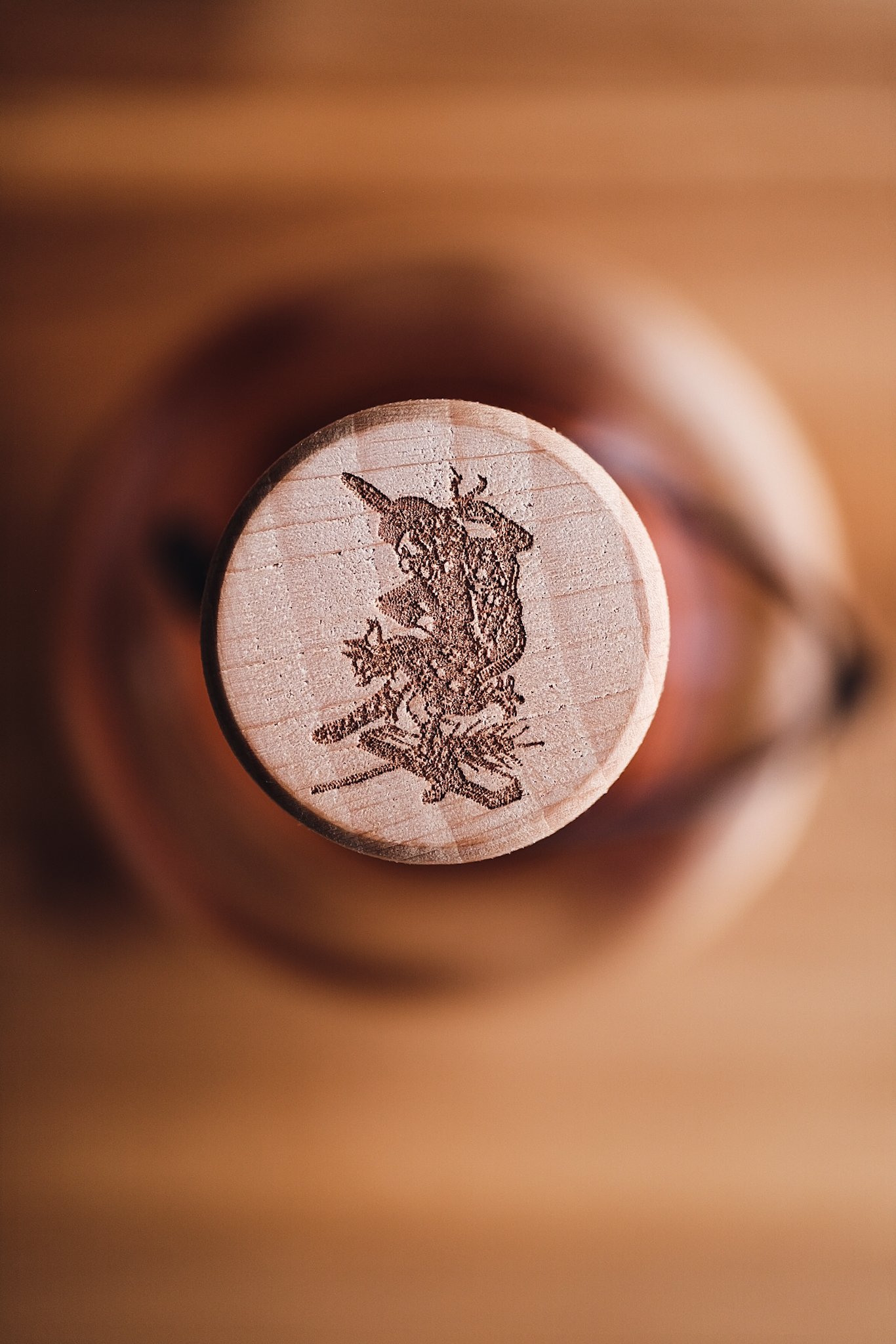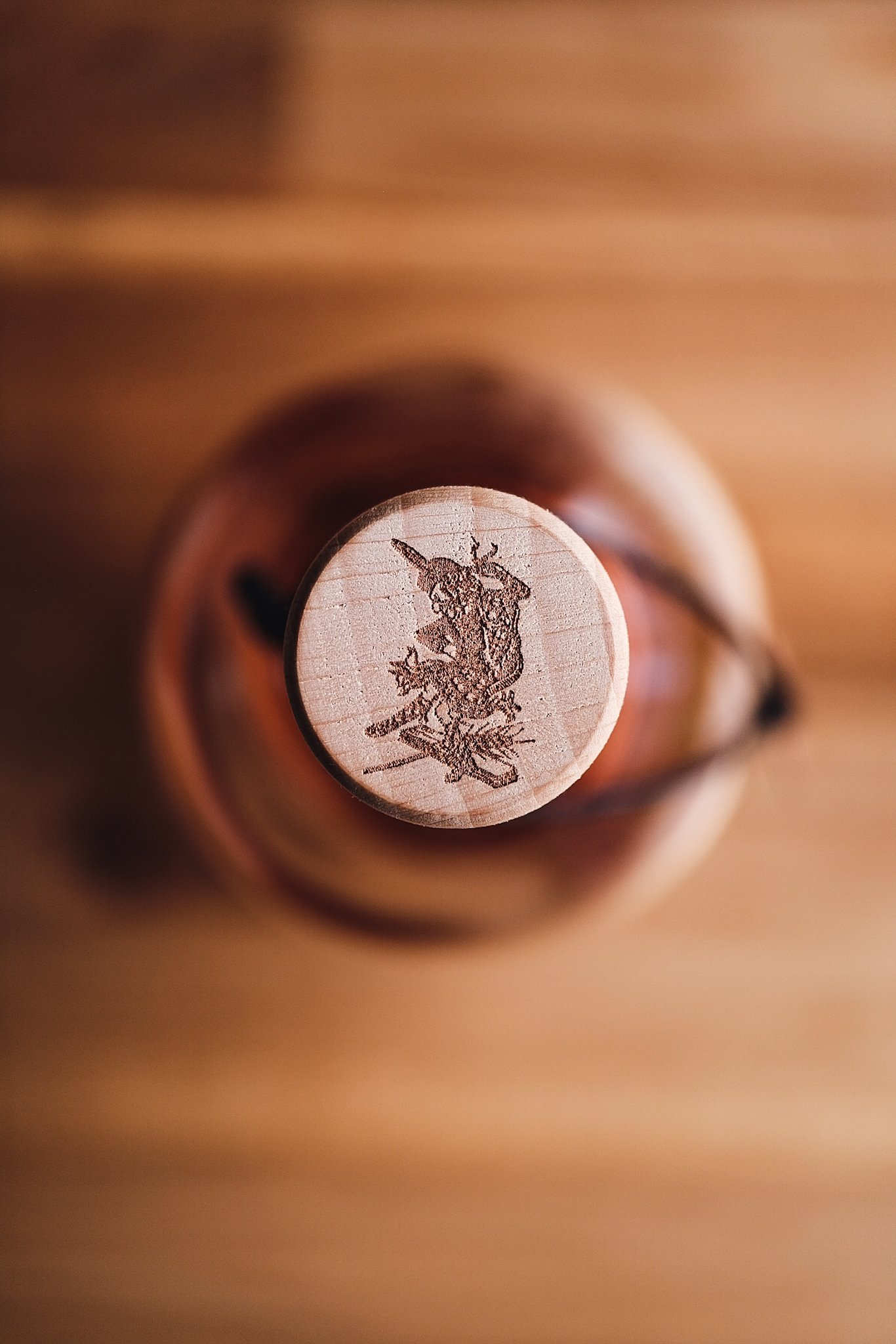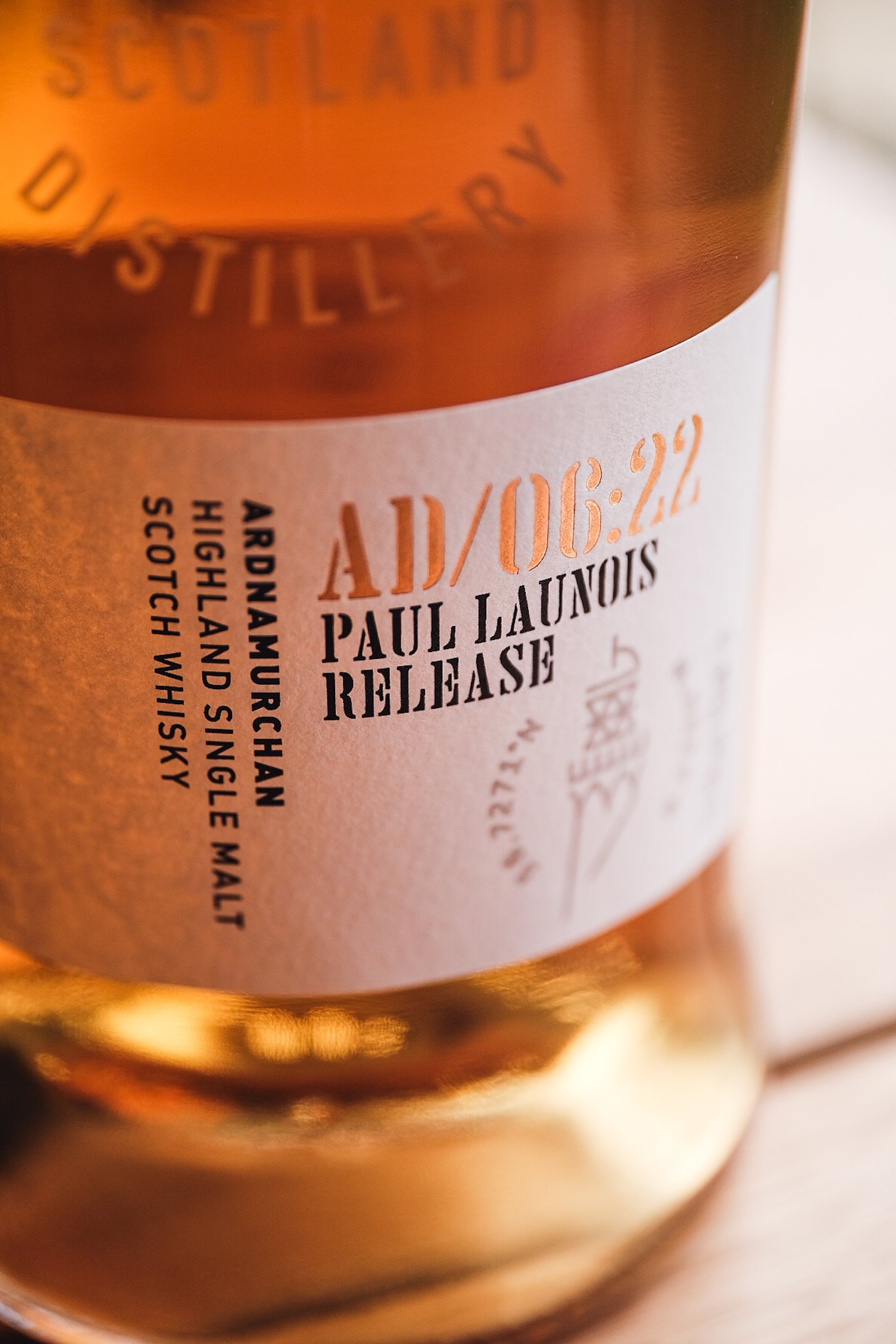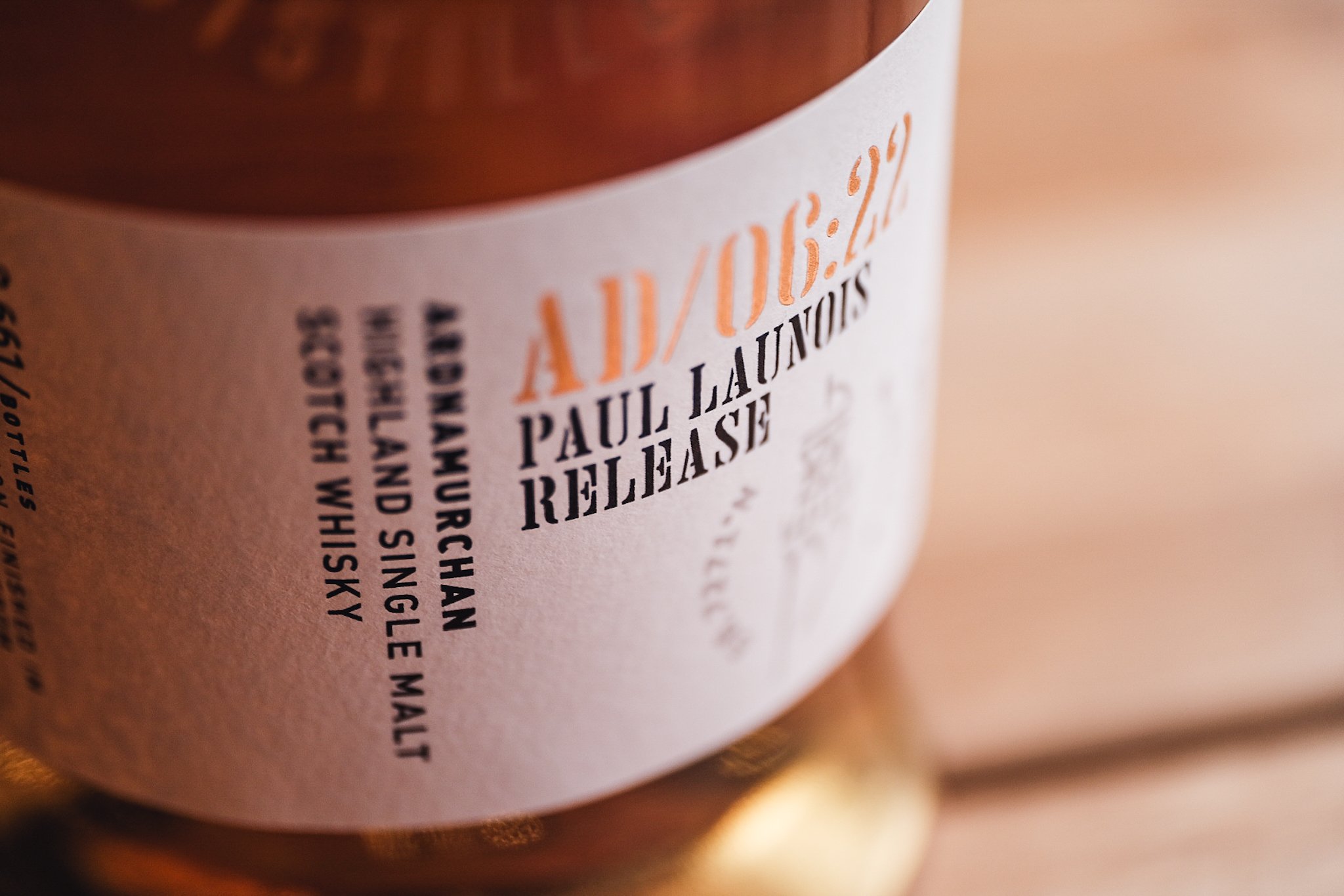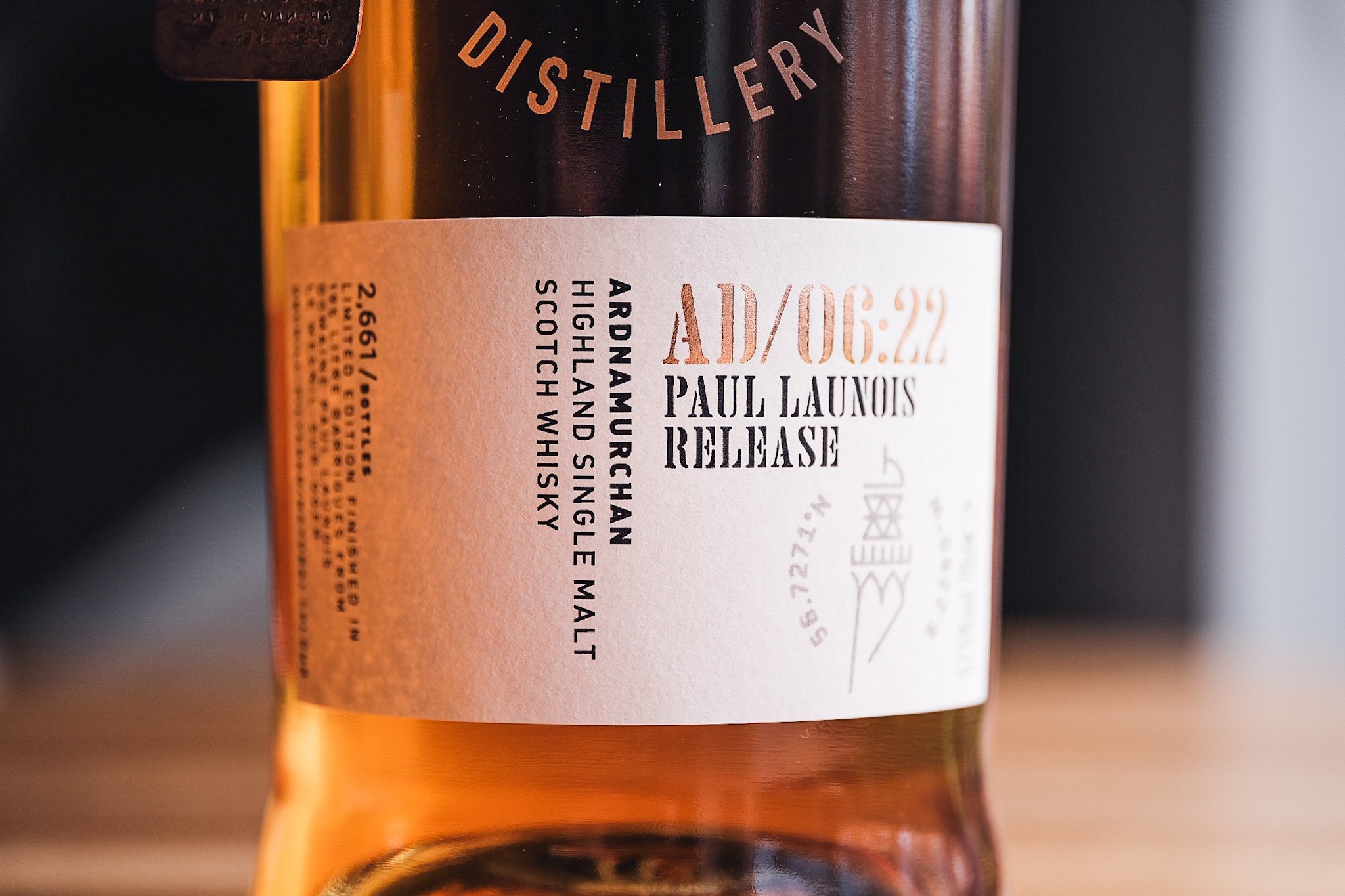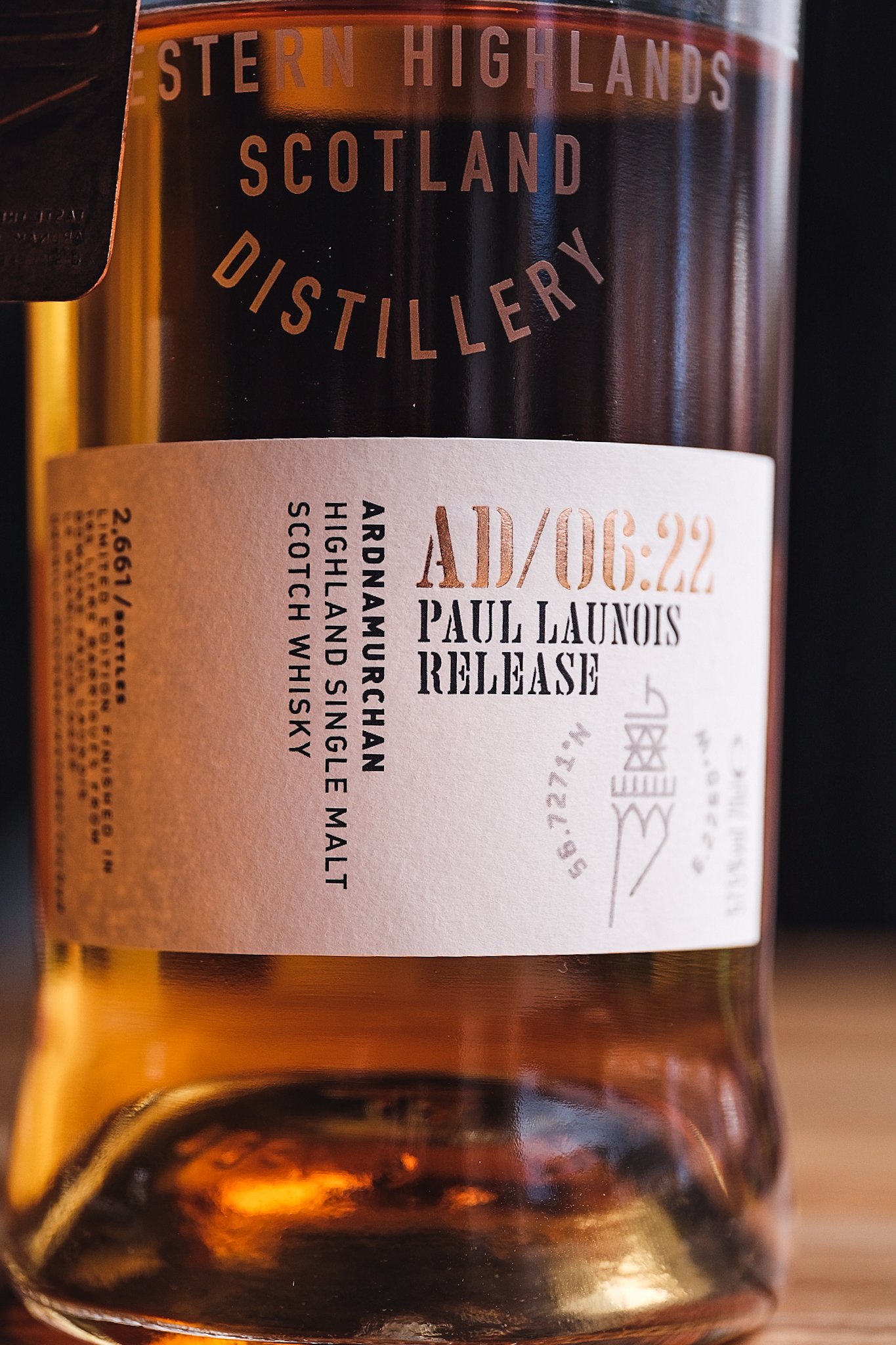Ardnamurchan AD/06:22 Paul Launois
2022 Release | 57.5% ABV
Score: 7/10
Very Good Indeed.
TL;DR
Fizzy fruity fun from a surprise wine cask
Right, no analysis this time.
No science, no deeper considerations of organoleptics and the interaction of liquids and firing synapses. I’m miffed.
The whisky industry is generally a friendly, convivial and supportive environment. For me, there has always been just one weak point: the interface between producers and consumers. Consuming members of the community are inherently invested, literally with their time and money. Producers are similarly invested, but to a further degree, dedicating their professional careers to our dear amber nectar. The intermediaries that do the selling, however, have no such necessitated investment. That said, the good ones obviously care, and it’s readily apparent.
Great whisky bars and retail shops build their reputation such that folks go out of their way to spend their hard-earned money there, knowing that the clerks and bartenders have done their homework and offer sage advice. Working in a retail space where most of my colleagues specialise in the consumer end of some aspect of the liquor industry, this quality is not lost on me.
What gets my goat, however, is people who work in this crucial interfacing sector (either retail or wholesale) that clearly don’t care. People for whom the liquid is just a means to an end, people for whom the biggest facet of their job is ensuring they sweet talk enough consumers or businesses into buying enough bottles to hit their KPIs (key performance indicators). I have an almost identical gripe with people working in the marketing sector. I’m told all too often that marketing is essential to good businesses and that the existence of the products we enjoy is predicated on how well they’re marketed. Whilst I will concede that a certain degree of market presence is necessary, my usual rebuttal is that the best advertising is a product whose quality sells itself by word of mouth. Think Springbank, Glengyle, Ben Nevis, Ardnamurchan, etc. When was the last time you saw a billboard or online ad for any of them? But do they have any issue selling, either as casks to indie bottlers or as bottles to consumers? Hmm…
We live in interesting times. Whisky investment funds based on collections of bottles, whisky NFTs, barrel investment schemes, and all other manner of unholiness. Much of whisky at the moment seems to be geared not towards the inherent quality of what’s being bottled, but rather towards how much business can be done trading off reputation and marketing. Our venerable founder has made this point frequently: swathes of the industry are asking what the market will tolerate, not what it deserves.
This bubbling lake of seething disdain is a background note for many of us, I’m sure. These last couple of weeks however, a combination of poor distribution companies and uninformed brand reps has pushed me to outright grumpiness.
One meeting (which went on for far longer than it ought to have done, might I add) was spent with me and my manager explaining to a rep what our store actually wants from their portfolio. The response was predictably indignant: why don’t we want to stock X when it’s such a popular, well established brand? I gave ample reasons in this instance, which essentially boiled down to the fact that the brand in question is targeted at the investment market much more than the enthusiast drinkers’ market — to which the store caters.
The rep’s response was that if we don’t stock the product, people will just buy it elsewhere. I agreed, and explained how happy I am for that to be the case, meanwhile I would happily redirect customers looking for X to Y as a far better value, similar-drinking experience. The idea that the quality of the liquid inside the bottle was more important than sales figures either didn’t register, or if it did, was insufficiently significant to prompt a different tact. Full disclosure: as it stands, a compromise was reached, and all parties are allegedly content.
More recently, someone from a spirits distribution company paid us a visit to see how their brands were selling in the shop. We struck up a pleasant enough conversation, which naturally led to general talk of whisky and similar aged spirits. Discussing some South Australian malts in the portfolio, I inquired whether he had spoken to a nearby distiller about representation and distribution. The fellow said he had, but that the producer in question didn’t meet certain parameters to meet his representation standards. Perplexed, I asked how the distiller fell short, which was met with an almost sneering “Well, that is my private information, I can’t just give this out.”
“This well known national distribution company is run with the belief that the contents of a bottle are completely secondary to how saleable and marketable one person interprets the parent brand to be.”
He went on to explain, almost as though to an infant, that what’s in the bottle can be very good, but that telling a story and having a brand that’s marketable is ultimately the most important thing and must come before all else. This was followed with a miniature lecture about his company and how virtuosic its formation had been — fresh off the heels of graduating from a marketing degree. By the time he left, there was a foul, bitter taste in my mouth. This well known national distribution company is run with the belief that the contents of a bottle are completely secondary to how saleable and marketable one person interprets the parent brand to be. Wow.
I still can’t decide what I’m more indignant about: the utter disregard for quality and any technical/production details, or the fact that this company trades with such success when its founder is so clearly out of touch with the modern customer. In an era where inherent quality, passion for the product and transparency are utterly paramount, this old world notion of spinning a yarn and delivering marketing waffle is still a viable business model? Honestly, I’m disgusted. More so for the fact that the company represents some very good brands!
In case I haven’t been resoundingly clear on my opinion thus far, here it is: you can shove your marketing. Stick your PR stunts and gimmicky nonsense somewhere very uncomfortable — dealer’s choice. The fact that money is spent on what I view as utterly useless drivel in place of investment in production is offensive, especially when the cost of doing so is part of the drive that’s increasing prices for consumers. Toss the ornate boxes, lose the collaborations with luxury cars (looking at you, Bowmore) and for the love of all that’s holy, hire representatives for your businesses that actually know and care about your products. The market edges further and further every day from tolerating your flannel, your inaccurate ramblings and your inflammatory price gouging. Be honest, be fiscally efficient, be direct and for FS be respectful of the people buying your liquid. Just because you’re getting away with something today doesn’t mean you will tomorrow, especially as the industry begins to communicate with sites like this.
The revolution is here, and consumerism demands you should either adapt or fail.
…
On a much cheerier note, let’s talk about Ardnamurchan.
Review
Ardnamurchan AD/06.22 Paul Launois, 2022 Release, 57.5% ABV
AUD$135 / £65 and sold out
So, who can better personify all that the modern consumer is asking of brands than Ardnamurchan? They have been savvy with their investments, focusing on producing the best liquid possible at their young age and collaborating with some of the great minds in the industry to do so — Dr. Jim Swan among them, rest his soul. They have kept the marketing to an efficient minimum, investing instead in transparency dialled to the nth degree with their QR code block chain encryption system.
With Ardnamurchan investing early in production schedules and cask purchasing, which allows for diverse flavour generation, we have seen not just a steady supply of fairly consistent core-style bottlings but also a slew of limited releases which have by and large thrilled customers. Ardnamurchan’s achievements have already been recognised broadly by the likes of the recent OSWAs — they took the title of Best New Distillery in both 2021 and 2022.
To me, possibly the most impressive facet of their production is that regardless of the casks, peat levels, clear vs cloudy worts, fermentation lengths and any number of other highly traceable variables, their distillate is always apparent. The temptation for any young producer is to dominate releases with casks to give some impression of age at the cost of uniqueness. However, probably due again to Dr. Swan’s input, every Ardnamurchan I’ve tried tastes exactly like Ardnamurchan. That being said, this is my first foray into an AD from a wine cask, and an unpeated new make via a champagne cask at that! So without further ado, let’s hop in.
Nose
Exceptional fruits — the fermentation notes ring out brilliantly. Peaches and nectarines, green bananas, hints of tropical stone fruit and even a little rummy tone including some pleasant ethyl acetate. Good gristy and sourdough malt tones supported by the oak, with rich butters, cinnamon, nutmeg, cloves, Chinese five-spice and wee touches of some acetaldehyde indicative perhaps of the Champagne casks’ méthode traditionnelle.
Palate
The wine cask influence is much more readily apparent here; it starts off with a bright vinous tone which I’m generally poorly predisposed to, but it accents the ester profile nicely in this instance. More stone and tropical fruits with added feijoa, green apples, grape jam and fizzy lemon drop lolly. The cask is just as present, with more spices and lactones striking a good balance between the more savoury and toasty cinnamon/nutmegs of the french oak and the buttery, coconut vanillas of the bourbon casks. Underpinning everything is a slight yeasty umami note that’s likely some organosulfurs — another great fermentation tone.
The Dregs
Possibly the most pleasing detail at the end of this glass is the lingering yet spritzy finish. I wouldn’t call this a particularly oily dram; the effervescent texture, good fermentation ester driven fruits and ample (though hardly overdone) casks finish with a mild hint of oak bitterness. For some that could be a detractor, but being the West Coast IPA-loving hooligan that I am, it offers a happy counterbalance to the fruits on retronasal. This is probably one of the very best wine cask malts I can remember enjoying. That hardly makes me a convert to the style, since I’m generally still repulsed by them, but I must doff my hat to the fine folks that have put this release together. How dare they make me enjoy this in such a confusing manner!
The takeaway for this cynic couldn’t be clearer: brands, do your homework, know your customer base, put your heads down and make the best distillate you can, then manage your casks and release quality bottlings. It’s both that complex and that simple; we the consumers will do the marketing for free, as long as what’s in the bottle is up to snuff.
Score: 7/10 TK
Dougie’s Review
Score: 8/10
Something Special
TL;DR
Hard to find, but another resonant whisky for auld Doog.
Nose
Boldly bright red fruity — cherry and strawberry. Match striker. Soy sauce and umami vegetal notes — spring onions. Acetone.
Palate
Cedar wood burst followed by a dissipating bright cherry chupa chups. Oaky, malty. Timber yard. Snuffed match. Pine box. Chocolate limes. Yeasty, savoury. Bright edge throughout. Liquid toffee ribbons. Fading boiled sweetie.
The Dregs
I first tried this in summer on my daughter’s birthday, when my brother-in-law brought it down from Inverness, having snagged it last-minute at his local shop. We opened and enjoyed it fully, with half his bottle remaining afterwards, but I wasn’t completely on board. The memory of the original 04.21 Paul Launois, that I tried after my tour at the distillery in April, seemed far more immediately enjoyable than this new version, presenting much more citrus sharpness. Maybe it was the heatwave and suncream skewing the experience somewhat. That and the birthday cake, maybe.
I chased this bottle long enough to get totally fed up when I came up empty handed, and vowed to give up chasing whisky forever as a result. However a throwaway comment on the Barflies Facebook group* that if anyone should ever find one, I’d happily take it, returned the spoils when the inimitable Peter Lee did just that and passed it onto me — he’s been sworn to secrecy, having clapped eyes on this haggard visage.
I opened it that same evening and was surprised to find a far more engaging dram, with savoury and sweet flavours balancing each other to deliver a developing, changeable and interesting experience. The champagne cask influence rewards the whisky with chocolate limes and an overall brightness, as well as a bit of the more astringent soy notes when compared to both the core range Ardnamurchan, and their various cask strength and single cask bottlings I’ve tried. An evening dissecting it is well spent.
This whisky is fantastic. I’m quickly becoming the boring guy who talks only of Ardnamurchan, and I was reluctant to contribute to this review because of it. However, I really do believe that it shows, again, that Ardnamurchan are creating phenomenal whisky, paving the way not just in “new” distilleries, but in the Scotch whisky sphere in general.
I see that Tyree has rated this a 7/10, but he’s definitely far more advanced in the palate department than I am (what the hell even is an organosulfur?), as well as being passionate about other spirits and drinks too, so his “impressive” scale is slightly different to my more rudimentary one. For me, this is an 8/10 whisky all day long, given the flavour experience and general deliciousness from start to finish of each glass, and it’s well worth the punt at retail — I’d have more than one on my shelf if I could find it. It’s hugely moreish and, coupled with that ABV, absolutely deadly if you’re not restrained enough to call it a day after a few. Ask me how I know.
Score: 8/10 DC
Tried this? Share your thoughts in the comments below. TK /DC
*The Barflies Facebook group is not a site for selling, acquiring or trading whisky, in fact it is rigorously discouraged. Doog dodged the vigilant and highly-stressed admins with Matrix-like agility, it seems. [WMc. Ed.]
-
Dramface is free.
Its fierce independence and community-focused content is funded by that same community. We don’t do ads, sponsorships or paid-for content. If you like what we do you can support us by becoming a Dramface member for the price of a magazine.
However, if you’ve found a particular article valuable, you also have the option to make a direct donation to the writer, here: buy me a dram - you’d make their day. Thank you.
For more on Dramface and our funding read our about page here.


